This year, the flooding season came late due to the prolonged drought. In previous years, from mid-May to June, water flooded all the terraced fields in Mu Cang Chai, Yen Bai . Water poured from one terrace to another, creating a seemingly "unreal" scene.
The photo series was taken by Vang A Thao, a Mong ethnic living in Mu Cang Chai, in early July at the two most beautiful terraced fields in Yen Bai, Mam Xoi hill and Mong Ngua hill.
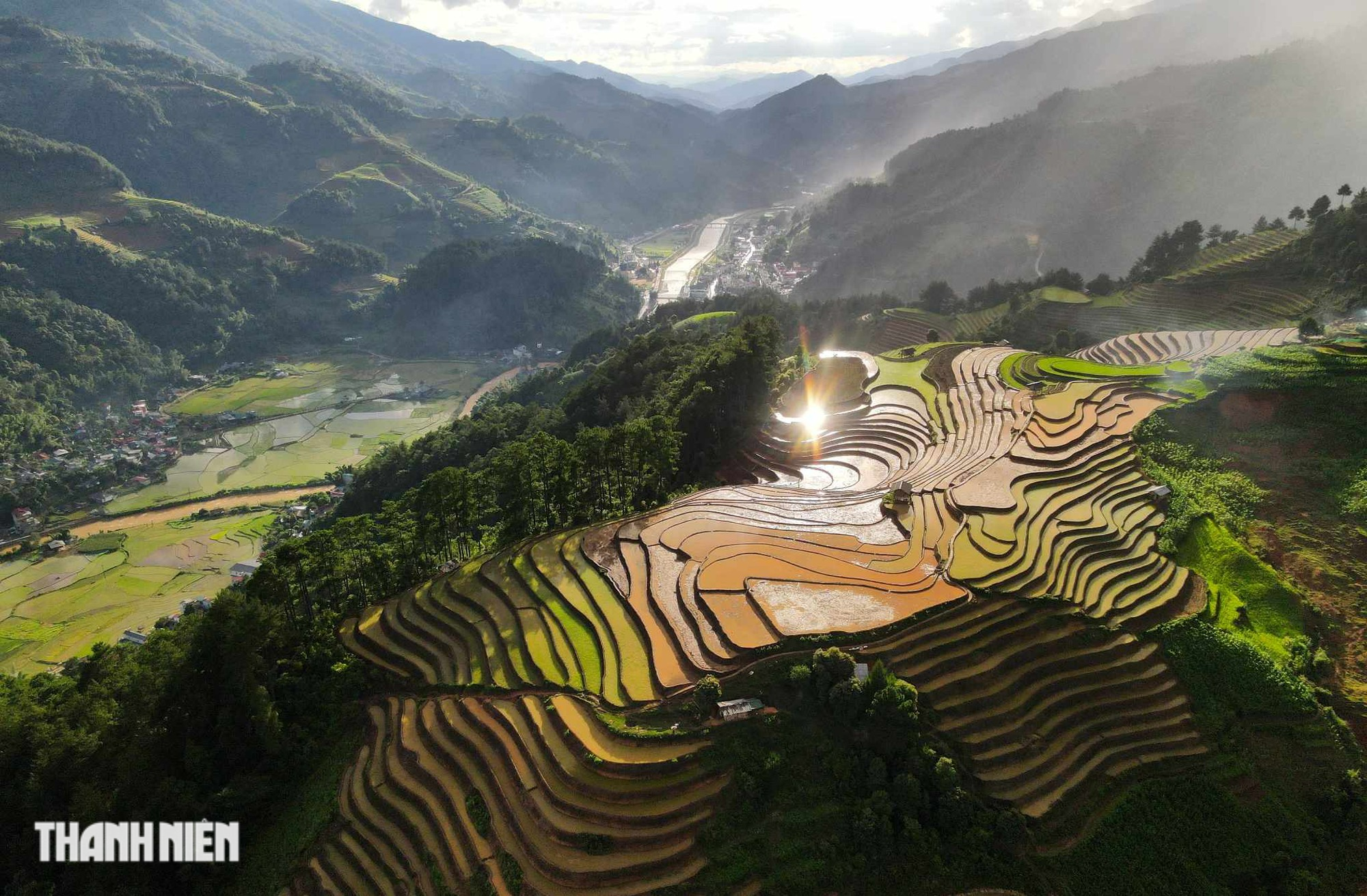
"The feeling of going through the roads to see the terraced fields brings unforgettable experiences. However, to fully enjoy it, visitors should consult more information from local guides and local travel review groups before setting off," said Mr. Vang A Thao, 29 years old, a local guide and photography tour leader living in Mu Cang Chai.
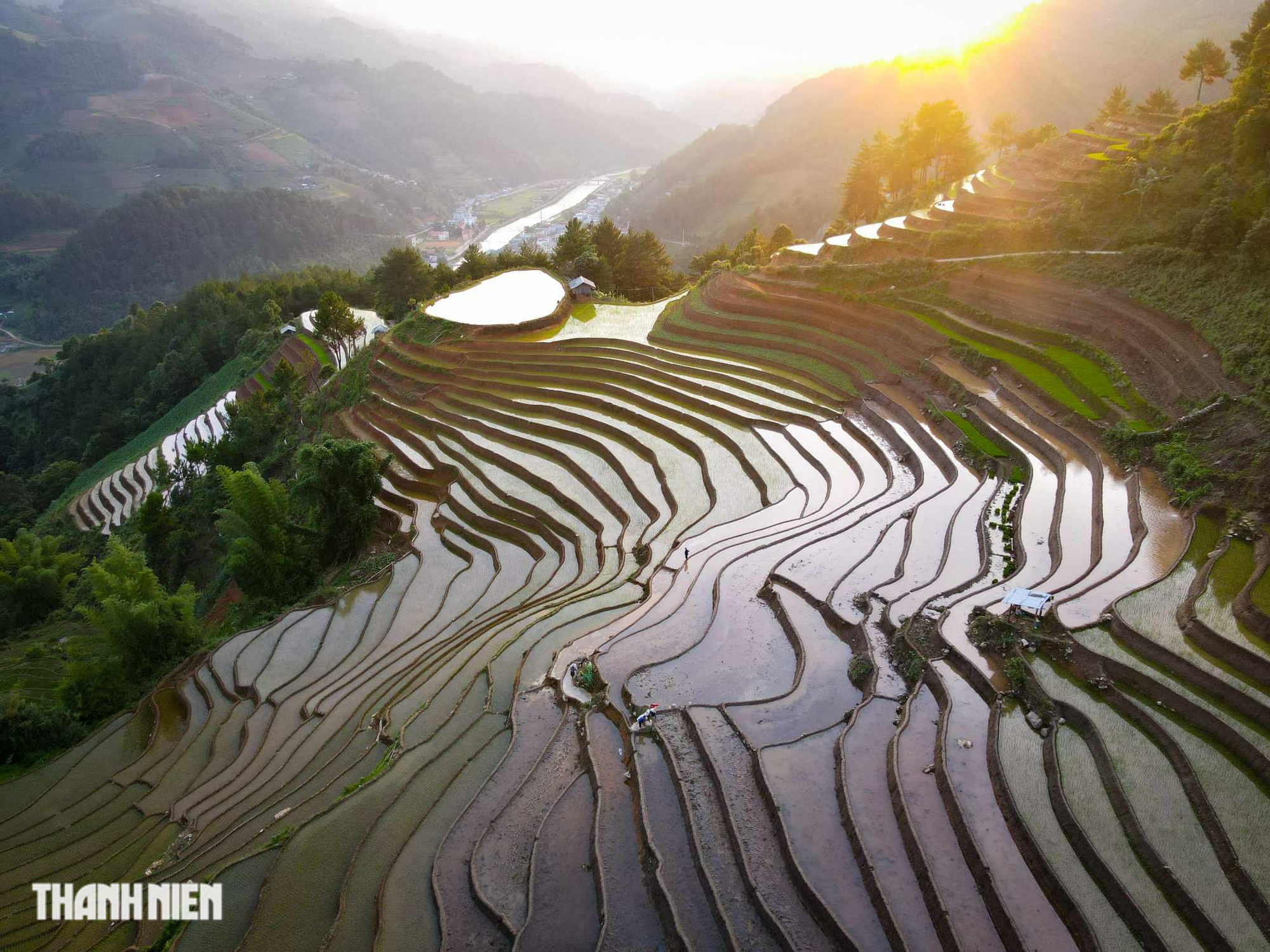
In 2007, the Mu Cang Chai terraced fields were ranked as a national monument by the Ministry of Culture, Sports and Tourism, with an area of 330 hectares, in the three communes of La Pan Tan, Che Cu Nha and De Xu Phinh. In 2020, Mu Cang Chai terraced fields were ranked as a special national monument.
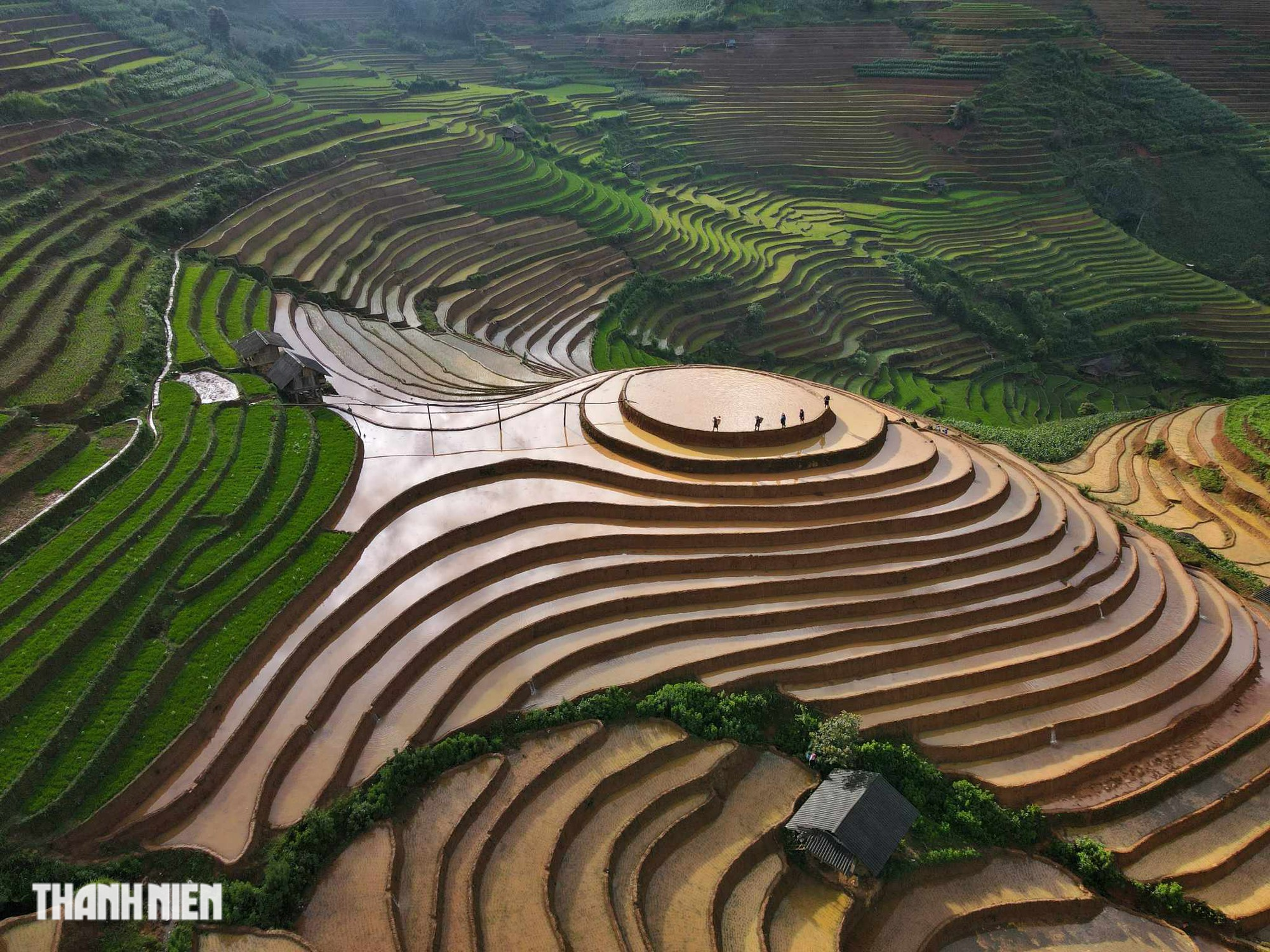
The terraced fields of Mam Xoi Hill in Han Xung village, La Pan Tan commune have become a symbol of Mu Cang Chai, making any tourist who sets foot in this highland ask for directions to visit. Mam Xoi Hill was planted with rice on July 1 and has now finished planting.
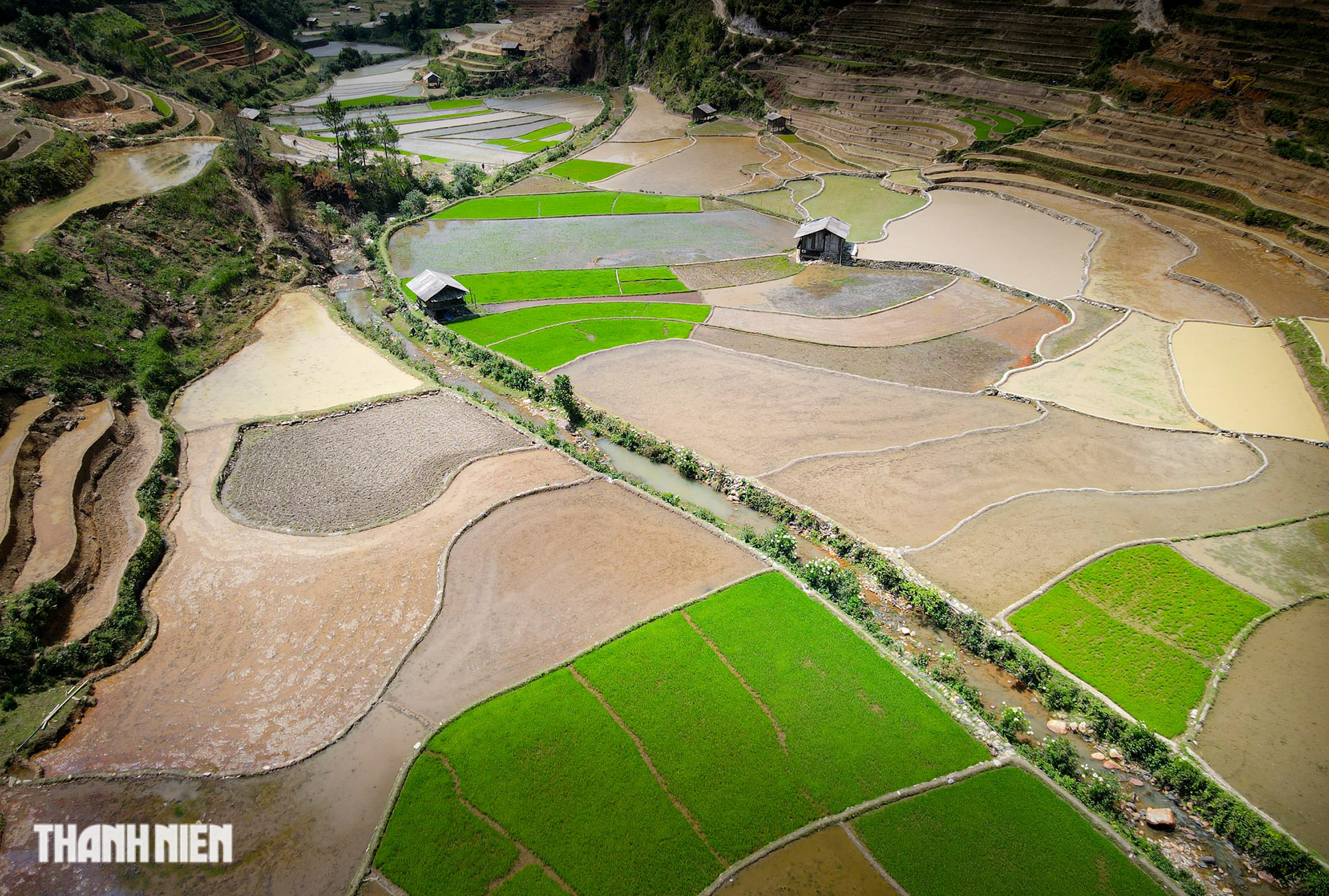
Peaceful houses and terraced fields interspersed with newly planted young rice of the Mong people. Water is brought from streams. Currently, many canals have been built so getting water is more convenient.
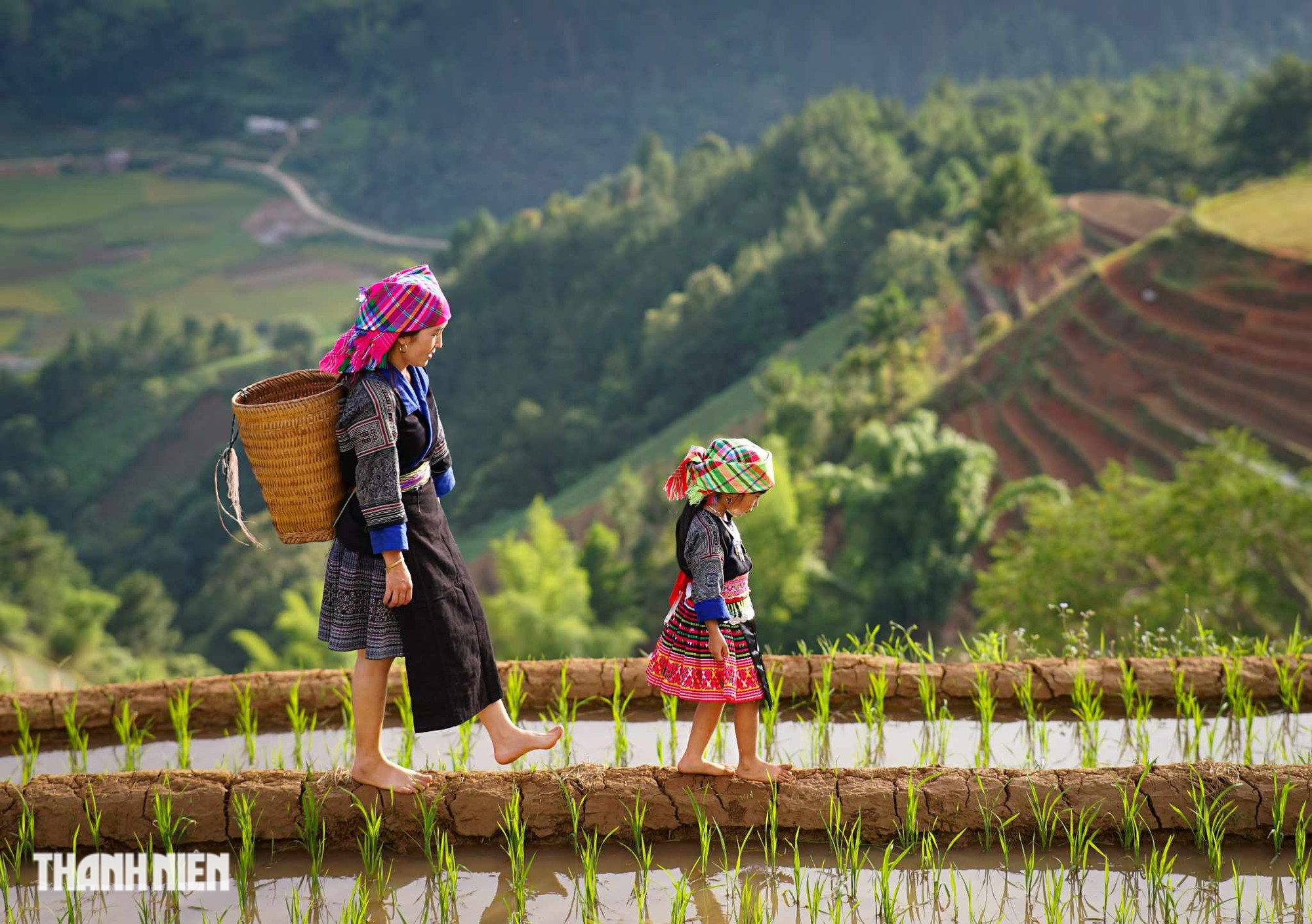
90% of the population in Mu Cang Chai is Mong and all of them are farmers, self-sufficient so they only go to the market when they need to shop. In the photo is Ms. Khang Thi Chai and her daughter Vang Thanh Van, 5 years old, in traditional costumes participating in farming work in Mu Cang Chai
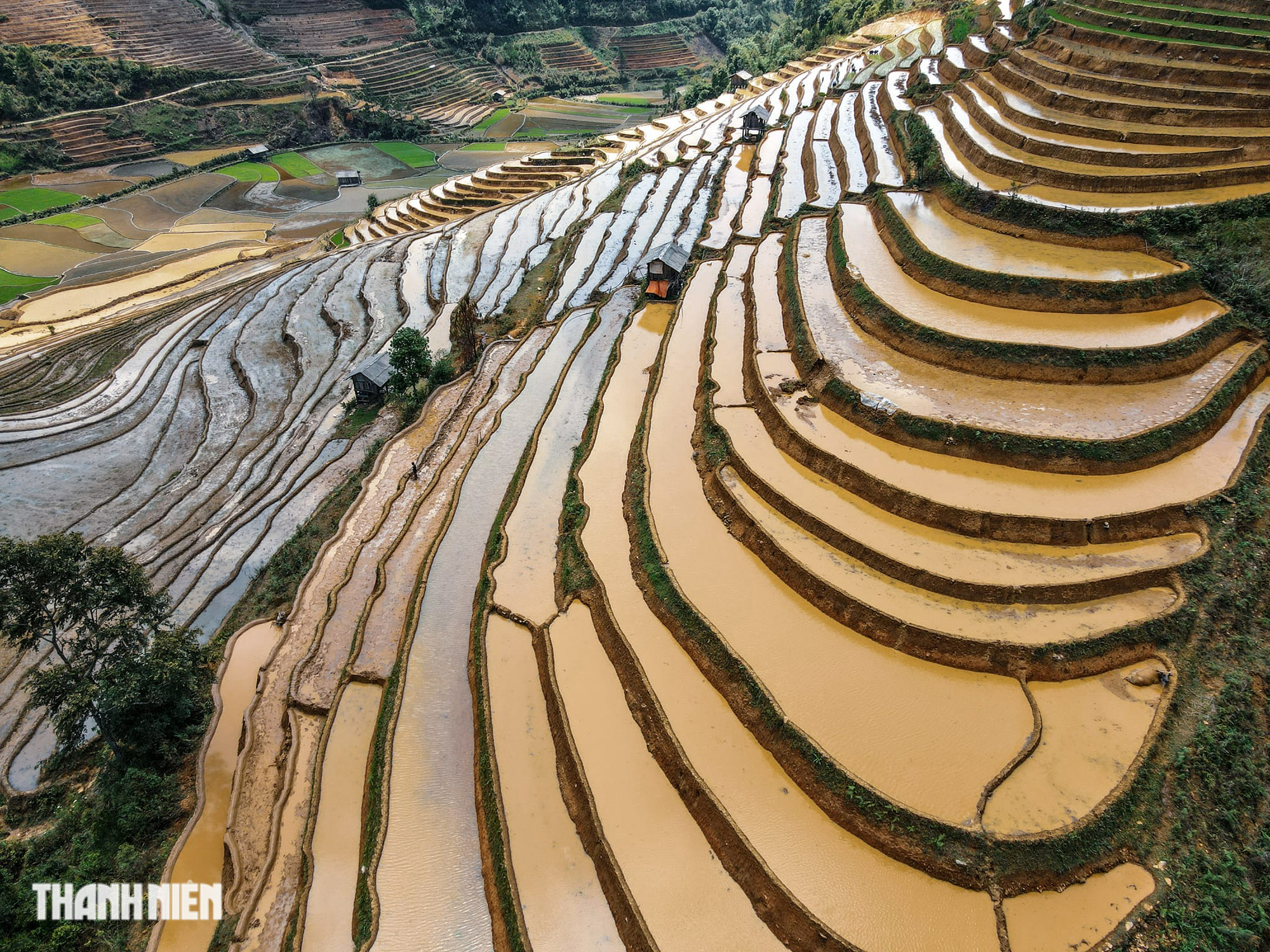
Mu Cang Chai terraced fields in the flooding season are no different from a work of art. "Even though I am very familiar with the scenery, there are times when I can only silently watch the scene unfold before my eyes," Vang A Thao confided.
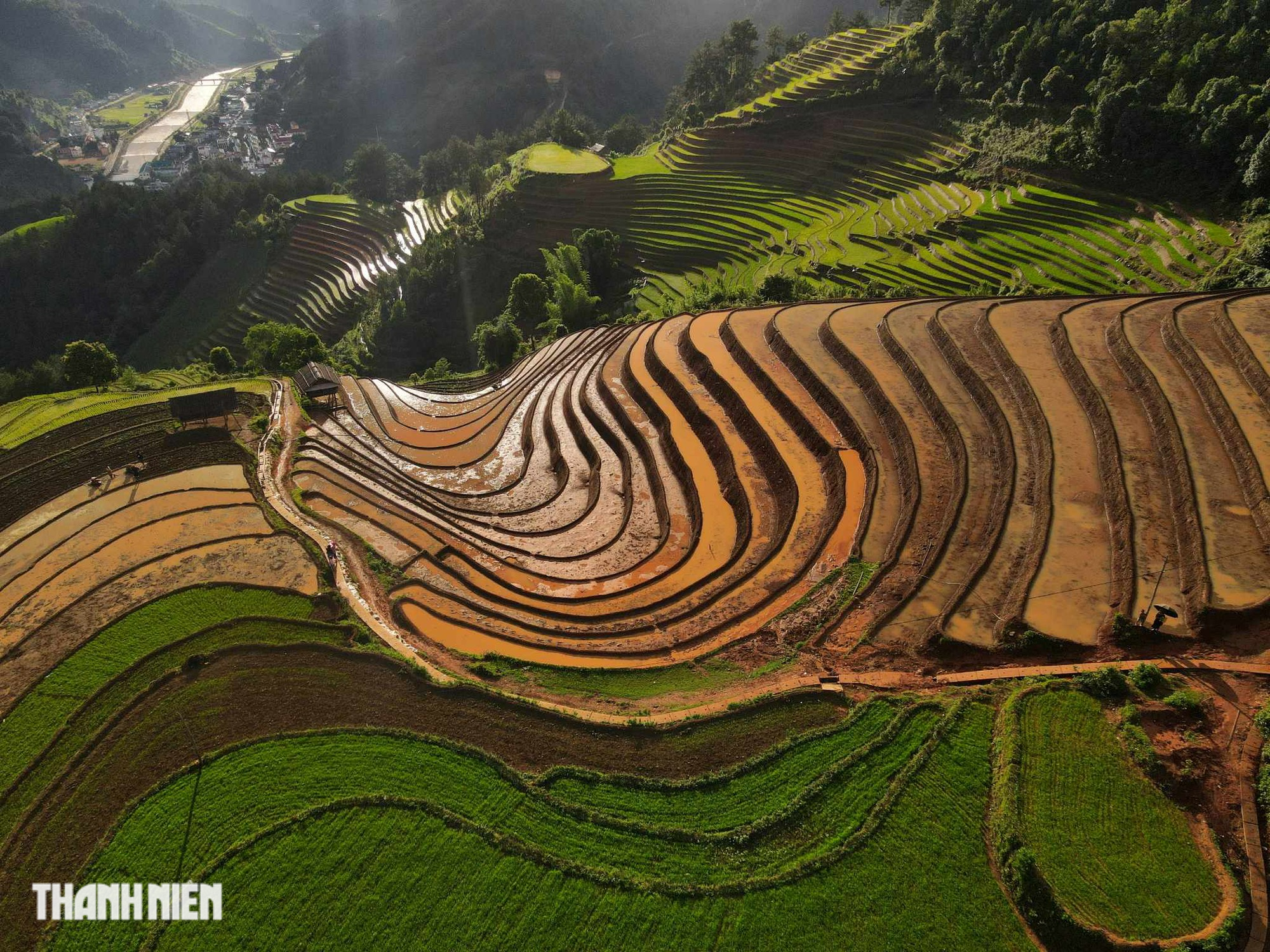
The terraced fields of Horseshoe Hill started to be watered on June 27, paused until July 3 to continue, and have now finished watering. It is expected that rice will be planted in 10 days.
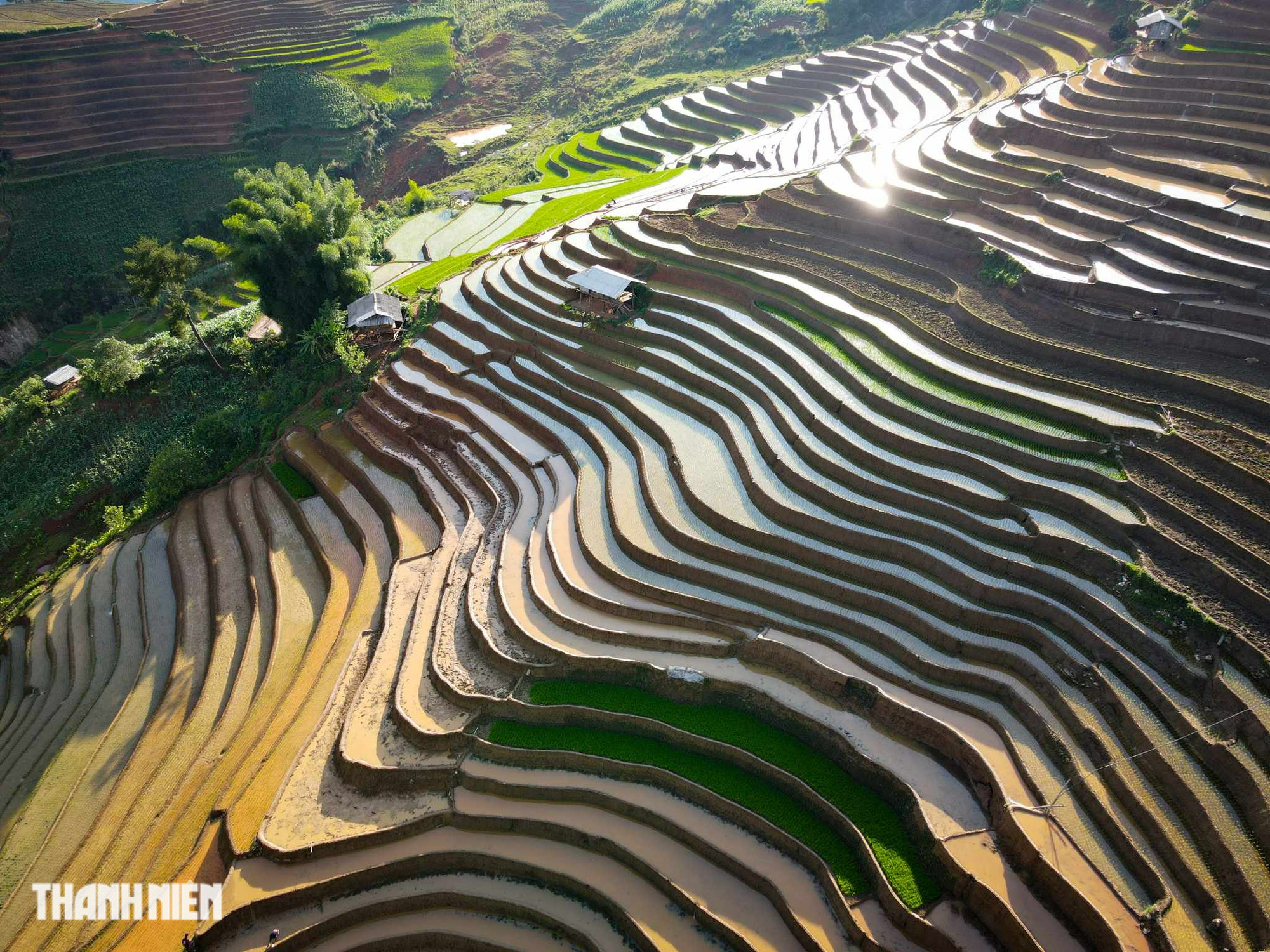
Exploring the terraced fields in the flooding season is not easy due to the slippery and 60-degree slope, so the best way to travel is to hire a motorbike taxi to go up the roads to see the scenery if you are not a good driver. But in return, the feeling of fatigue disappears when looking out at the layers of rice fields stacked on top of each other.
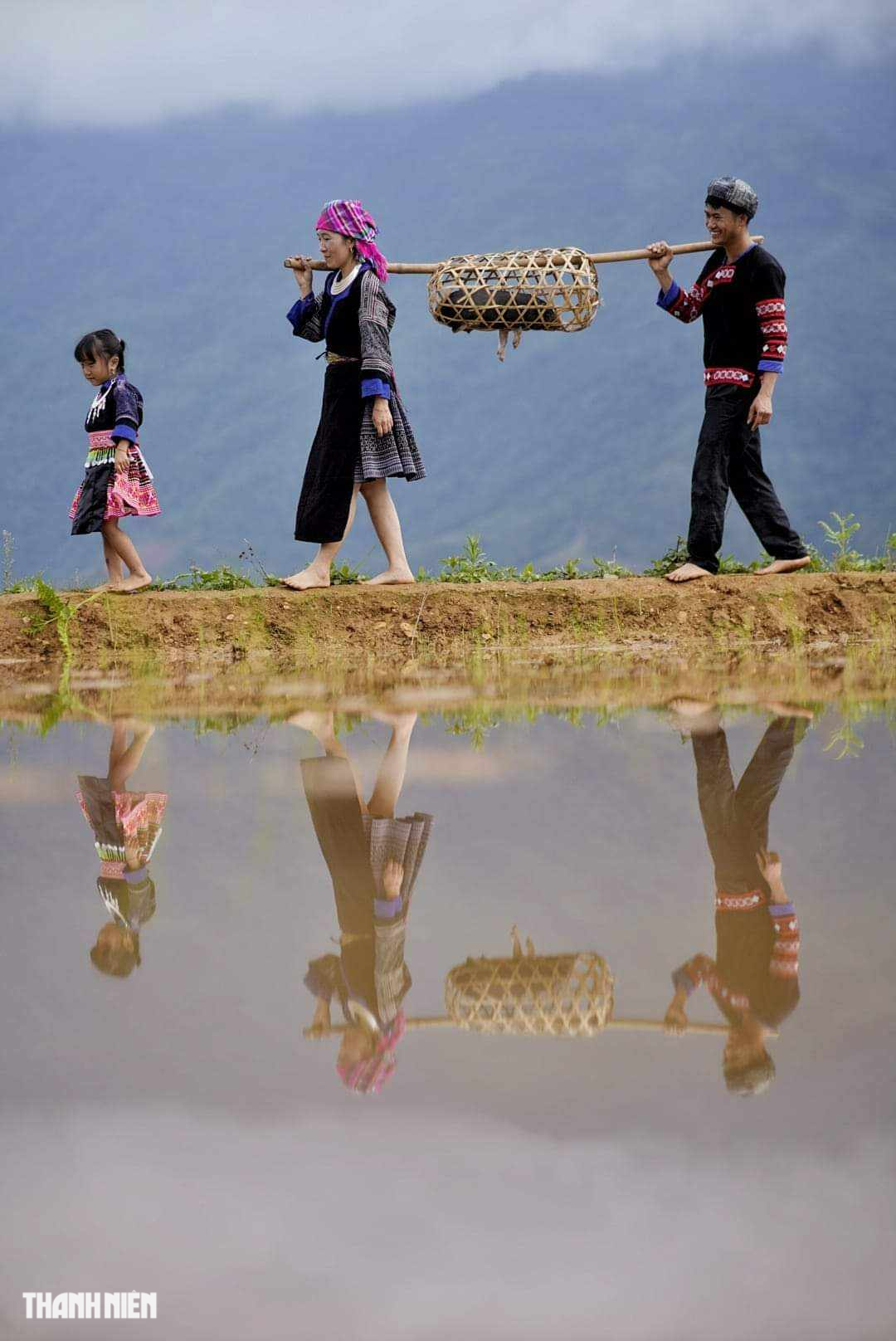
A Mong family carrying pigs they just bought from the market for breeding is walking across the terraced fields. At the beginning of the rainy season, the land will be plowed first. Then, depending on the amount of rainfall each year, people can pour water right after plowing or wait for the rain to come at the end of June. After plowing, people harrow the first time about a week before planting rice, the water will be drained but not allowed to dry hard. The second harrowing is to soften the soil and flatten the surface after the soil has been taken to build the banks, then the rice must be planted the next day.
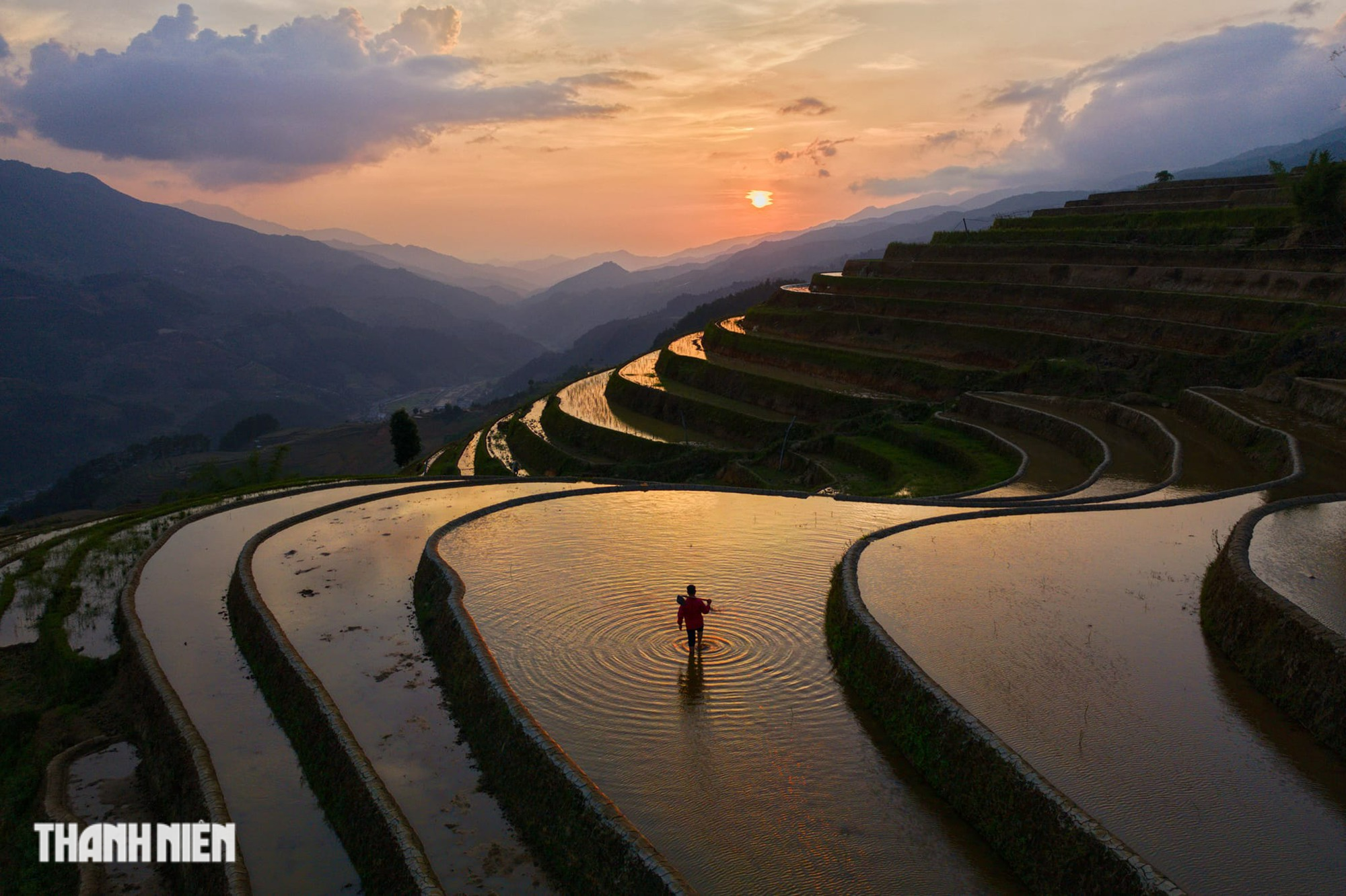
During this season, the rain is unpredictable, so visitors should always bring a raincoat when admiring the terraced fields of Mu Cang Chai. Because of the rainy season, the sunset moment is also rare and extremely magical.
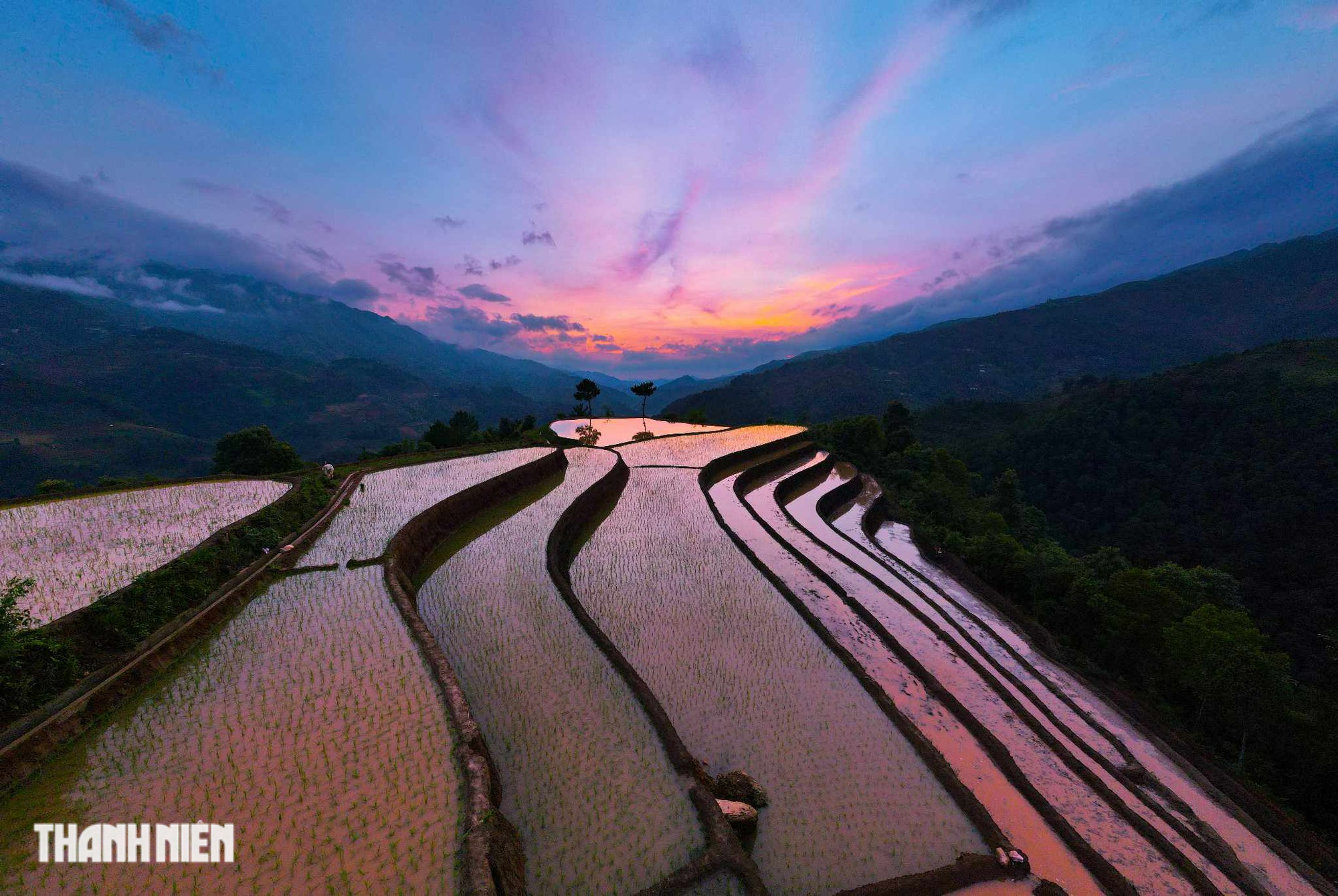
The water on the terraced fields is tinted red by the sunset, making the scene seem "unreal".
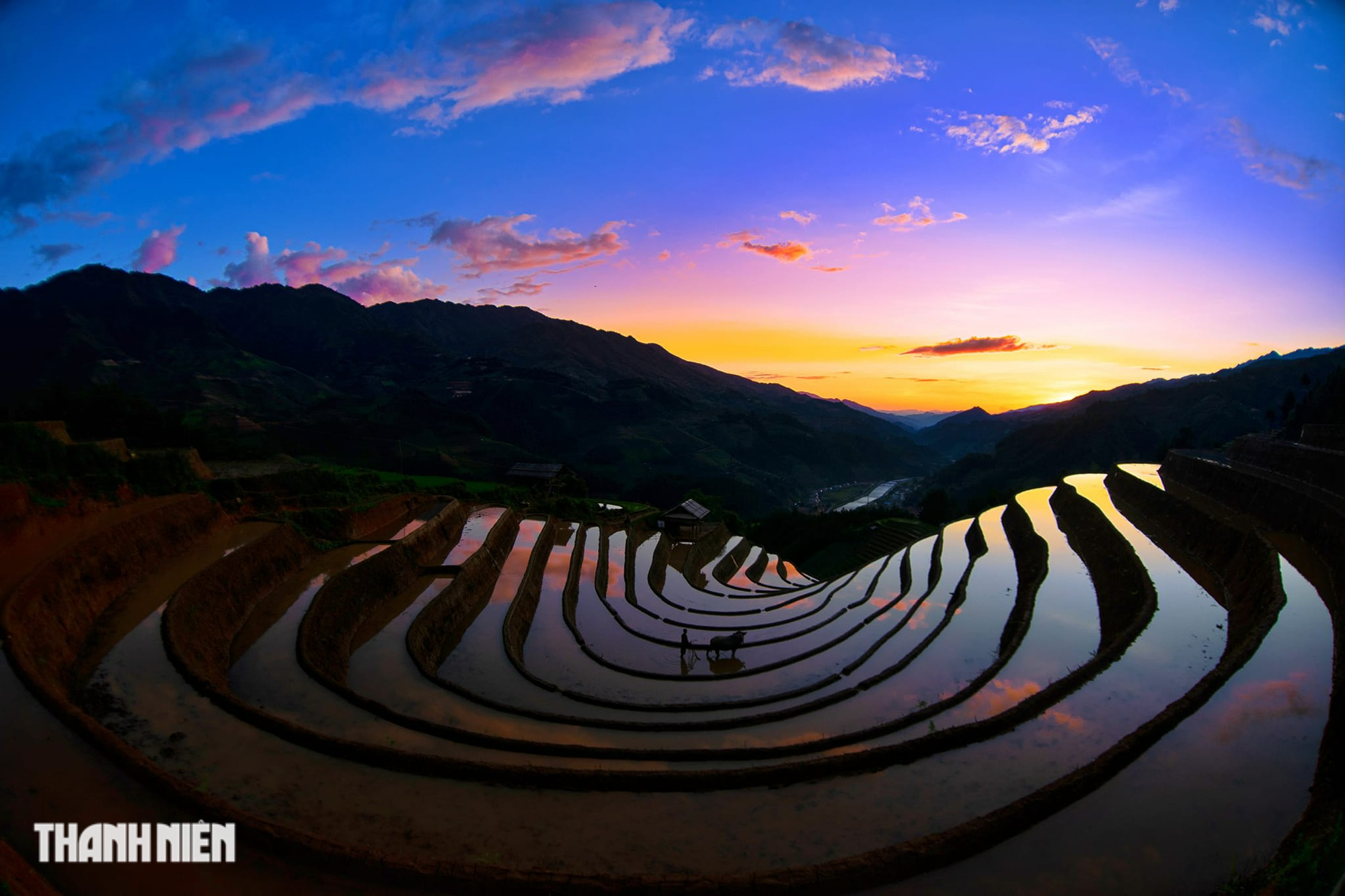
Sang Nhu, 4 km from Mu Cang Chai town, is home to many terraced fields in various shapes, with lines that look like horseshoes, shoe tips or eyes. In the photo is the Mong Nguu terraced fields hill, which attracts many photographers and tourists.
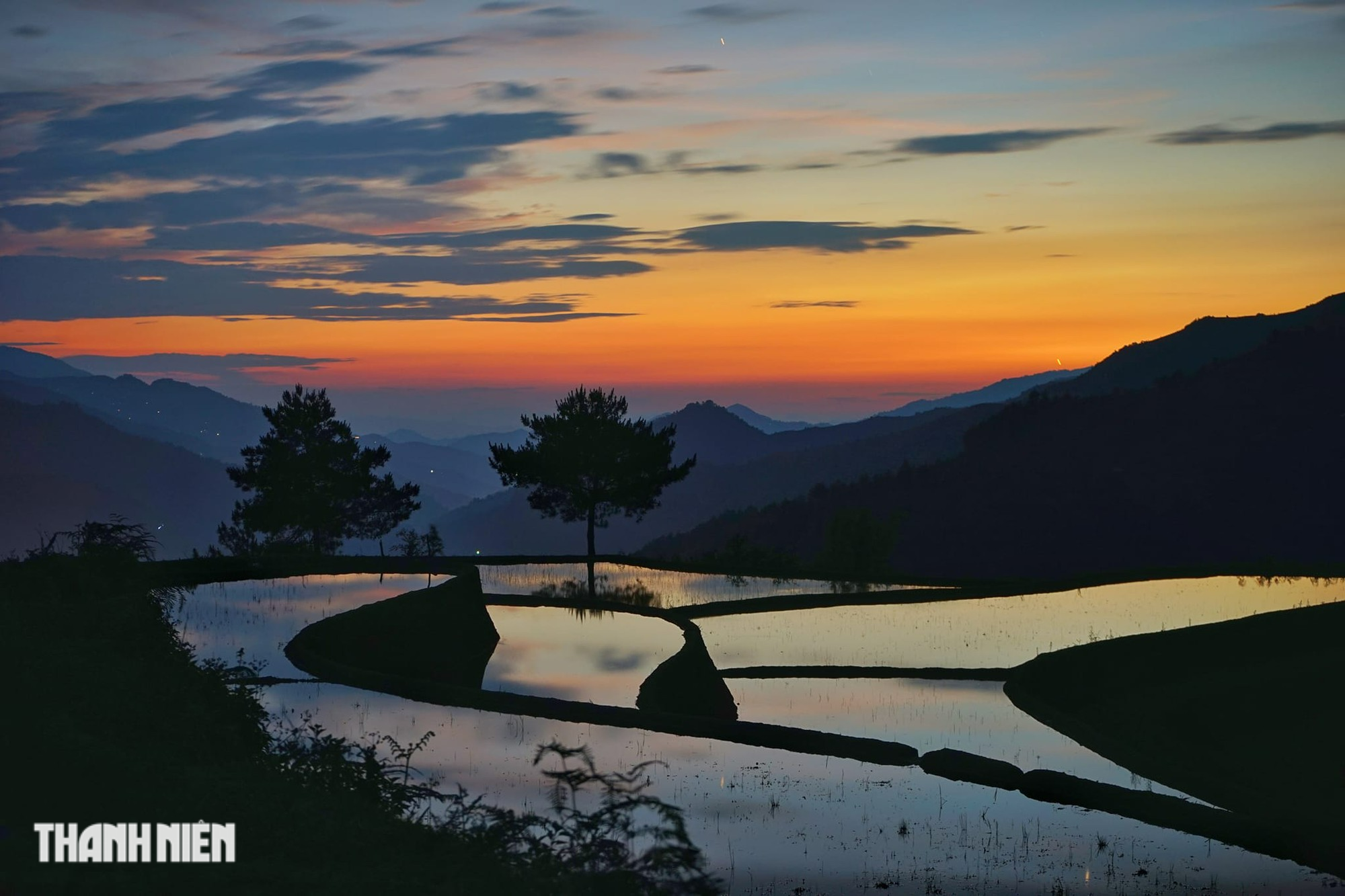
Enchanting sunset on the flooded rice fields
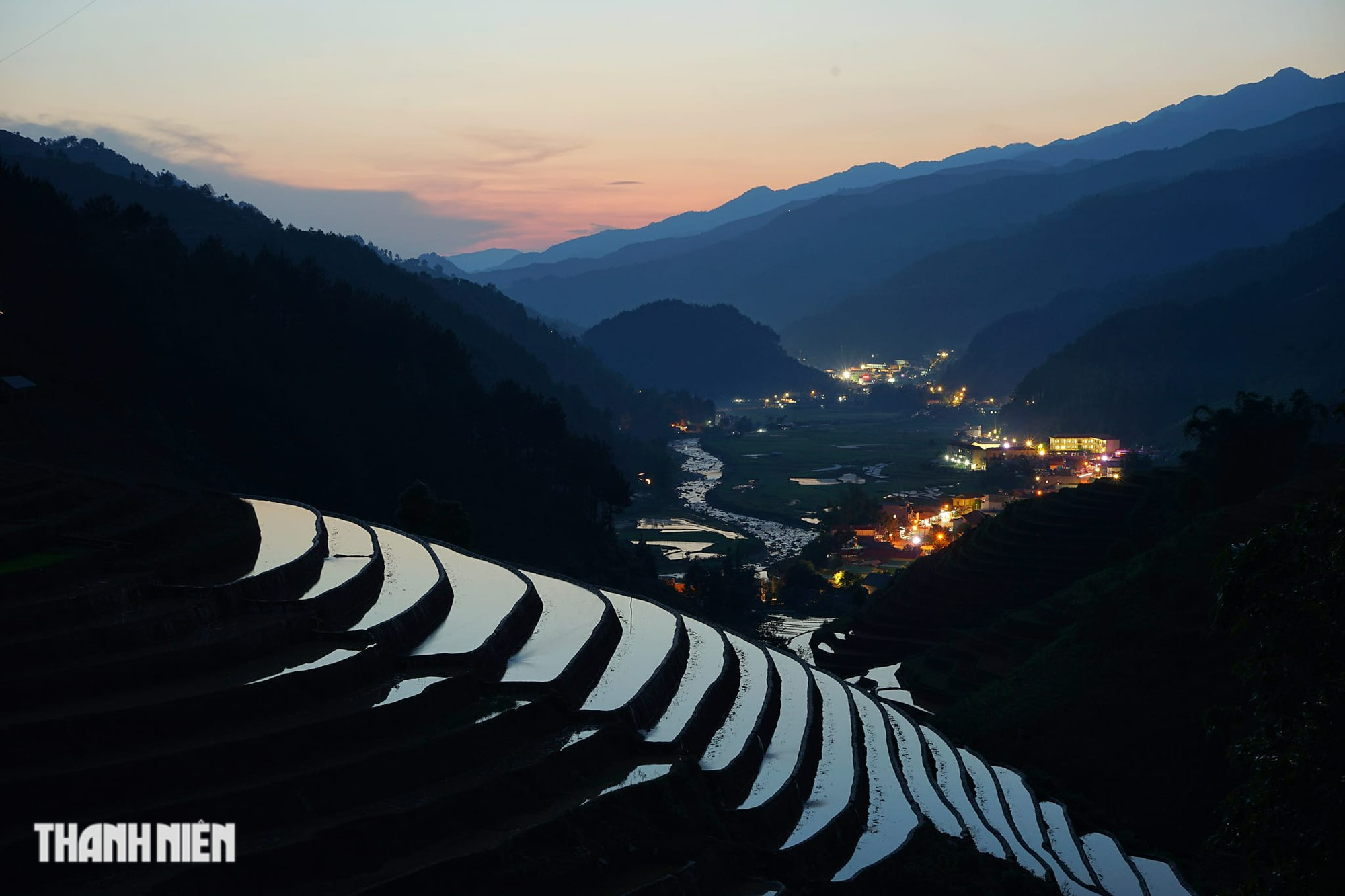
Mu Cang Chai town is magical in the night lights next to the terraced fields in the flooding season.
Flood season on Mam Xoi hill
Source link


![[Photo] Binh Trieu 1 Bridge has been completed, raised by 1.1m, and will open to traffic at the end of November.](https://vphoto.vietnam.vn/thumb/1200x675/vietnam/resource/IMAGE/2025/10/2/a6549e2a3b5848a1ba76a1ded6141fae)





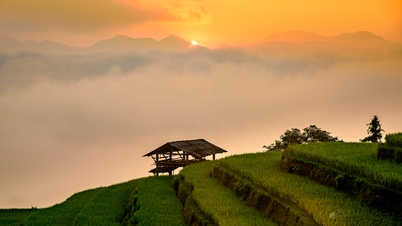




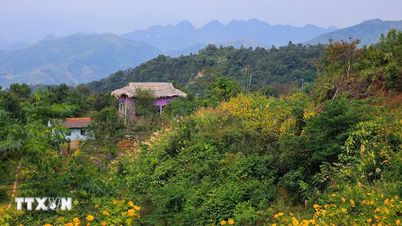







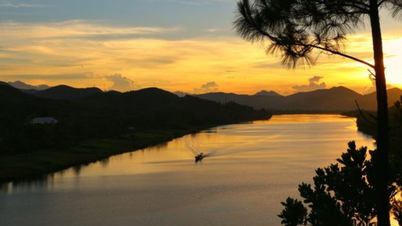

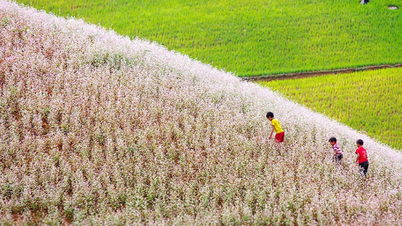

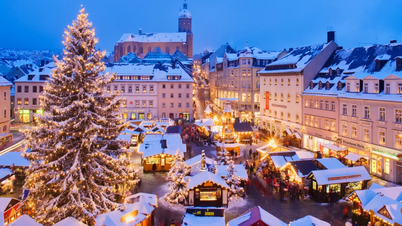








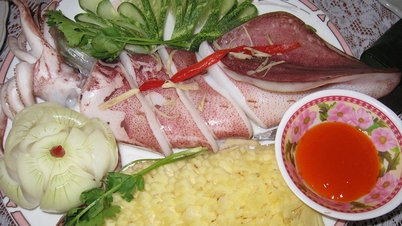
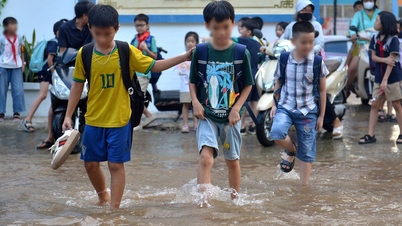












































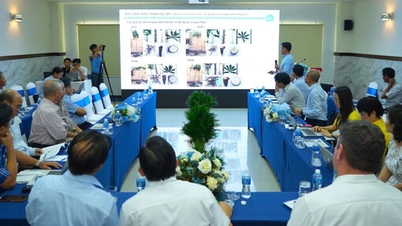

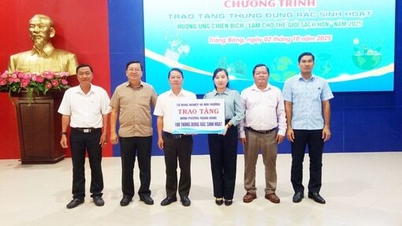
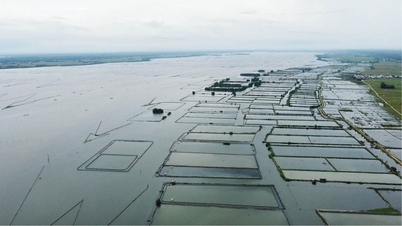

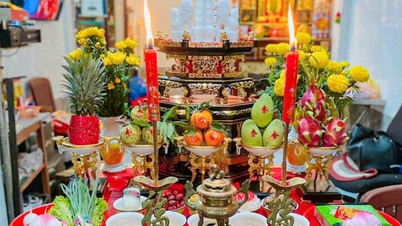

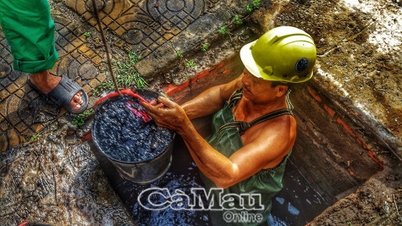














Comment (0)